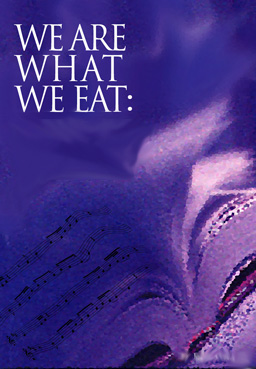| |
Of What
Do We Sing?
The Role
of Music in
Liturgy
_______________________________
A PARISH VISION STATEMENT
Perhaps the best place to start in fashioning a statement of vision for a parish music program is to ask the most elemental question “Why have music anyway? Why do we sing?”
Indeed, part of that answer is found in the rich tradition of our 2000 years of history-- but the tradition with which I’d like to open this conversation goes far beyond the era of Mozart, or Hildegrade, or Gregory, or even the Psalmist, David.
It goes beyond the artistic to the archetypal. Beyond the grandeur of cathedrals to the primal caves of Lascaux, where, men and women, the enthusiastic young and wizened old, imaginative and intelligent yet without the accoutrements of articulated language and sophisticated culture, gathered together to acknowledge the experience of the divine, the transcendent, the other wordly.
A power to which they knew they were connected, compelled. A Force identified with the very pusling of their own heartbeat. A Force that welled within their spirits, excited their imaginations, and begged for physical expression.
They found it impossible to contain their awe at the mystery of life as imagination only---they needed physical vehicles of expression.
They took their fears, their questions, their imaginings, and voiced them, not merely as cerebral queries, but, like the wolves that lived with them, as cries to the night sky which so fascinated them.
They imitated, reflected, the pounding of their hearts with percussive instruments. Instinctively, they added their breath to echo the choirs of birds and animals around them with flutes and horns. They realized that the individual thoughts and feelings and yearnings they had in the face of the Mystery were not so uniquely individual after all---and the most natural thing to do was to raise their musings, their chants in harmony with the others who had the very same experience.
Every Civilization that incrementally evolved from this early human experience of cave community developed a culture and set of ritualized prayers and songs that expressed this simple and elemental mystery of, and connection to, the ineffable, the numinous, the Transcendent.
Even in Jesus’ time, a full 1500 years into the formalized Jewish tradition of ritual music, there was a sense that the cries of “Holy is God most high” that echoed through the streets of Jerusalem were not merely an intellectual and cultural assent to some theological concept. As Luke recounts in his writing of Jesus’ entry, “On hearing the chanting of the crowds ‘Blessed is the One who comes in God’s name!’ the Pharisees demanded that Jesus rebuke the people. He answered ‘I tell you, if they were to remain silent, the very stones would cry out!’”
From the caves of Lascaux, the countryside of Jerusalem, the Cathedrals of Cologne, the primal cry to the Transcendent has been, and remains, as strident as ever.
We might think that what we do in church as we worship today is such a sophisticated thing-yet, if we’re honest and humble enough to see it, I think we know better.
The framers of the reforms of the Second Vatican Council knew that simple, humble, truth as well.
With that humility, that simple understanding of the direct and awesome infusion of the Divine in all endeavors of creation, in all human activity, three documents from that Council (2 directly from the council, one 10 years later) shaped the pastoral and liturgical sensitivities that ought to drive the vision of a parish music program. The Church in the Modern World, The Constitution on the Sacred Liturgy, and Music in Catholic Worship
Lumen Gentium,
“The Church in the Modern World”
............................................Continued>
|
 |
|